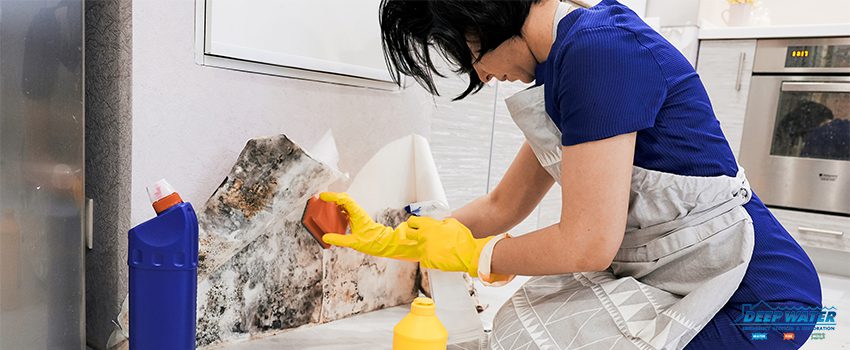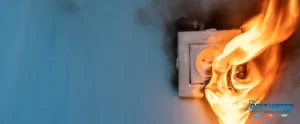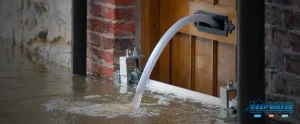Cleaning up after a flood should be a priority.
Water damage mitigation involves immediate remediation after a flood to reduce potential damage. Carrying out a swift response is a must because there’s no way of knowing the source of the floodwater. One thing’s for sure: it’s unsanitary. You must know how to clean wood furniture after a flood and other stuff in your home.
Letting the water sit even for a short period is dangerous to your health. Flood affects anything it comes in contact with within the area. The problem gets worse if the floodwater has sewage. The sooner you clean it up, the better.
Understand that cleaning up floodwater and flood-stricken belongings requires safety precautions. Exposure to floodwater exposes you to germs and bacteria. Find out how you can save your belongings safely after a flood.
Flood Cleanup: Things to Do Before You Start
As much as possible, you want the cleanup to involve adults only. Keep children, seniors, even your pets out of the flooded areas. Wear protective gear when cleaning up the flood. Use non-porous or rubber boots and gloves. Don’t forget to wear eye protection.
Scan and walk through the flooded areas. Identify which items to discard and which to salvage. Accept that not all items will be good as new after cleaning or disinfection. Although it will be difficult to part from your belongings, you might need to let go of some.
The salvageability of an item will depend on how long floodwater soaked it. With water damage, you have better chances of getting your things back when you act right away.
Here are some items you may need to let go of:
- Baby toys
- Upholstered furniture
- Mattresses
- Pillows
- Rugs
- Books
- Carpets
There’s no saving insulation and drywall either. Remove and replace damaged insulation and drywall instead.
Floodwater Removal Tools to Use
A squeegee is effective in removing floodwater and sewage. It’s helpful in both commercial and residential properties where the affected area is large. The type of squeegee will depend on the floor surface.
For Uneven Floors:
A foam squeegee works best on tiled floors and asphalt.
For Even Floors:
A rubber squeegee works on concrete floorings. If you’re wondering how to clean a concrete basement floor after a flood, a squeegee is the best tool for that.
Floodwater Removal Process
Now that you know the right squeegee to use, the next thing to do is remove the water. Here’s how you should do it:
- Use the squeegee to pull the water and debris.
- Begin on the edges and move the liquid and sewage on a pool or into a drain.
- Tap the squeegee now and then to remove excess debris.
After Floodwater Removal
Proceed to clean the area. Here’s what you need to do:
- Use warm, clean water and soap to wash the floor.
- With the squeegee, spread the water and soap.
- Mix a cup of household bleach with 5 gallons of water. Use a bucket and sanitize the area.
- Use the squeegee to spread the bleach solution on the floor. Sanitize all corners.
- Do not rinse. Leave it to dry.
Move on to other hard surfaces next. Follow these steps:
- Use dish soap or laundry soap to clean surfaces.
- Rinse with clean water.
- Use the bleach mixture to sanitize the surface.
- Let it air dry.
How to Clean Carpet After a Flood
If you can’t let your carpets go, you can use diluted chlorine bleach disinfectants to rinse them. This method may also work for your upholstered furniture.
How to Clean Wood Furniture After a Flood
Before you completely know the extent of the damage on your wood furniture, clean and leave them to dry. From there, assess whether the flood has compromised their integrity.
Use a mixture of ½ cup water and ½ ammonia to clean the furniture that you’ve immediately removed from the floodwater. This solution will remove any white spots. If it does not restore the color, use a 000 steel wool and olive oil. Rub it onto the wood grain. Use a soft cloth to wipe it down. If it retains its color, use furniture or wax polish for finishing touches.
Things You Can Keep After a Flood
Time is of the essence when it comes to water damage. Here’s a list of things you can keep after a flood:
1. Canned Goods
Wash the canned goods and remove the labels. Sanitize them using bleach. Boil the cans for 10 minutes. Use a permanent marker to know the contents.
2. Cookware and Metal Kitchen Utensils
Use hot soapy water to wash pots, pans, mugs, chinaware, and glass. Put them in a drying rack to dry.
3. Polyester-Filled Pillows
Wash them in a washing machine with low-suds detergent and warm water. This method also works with urethane pillows. (Note: Pillows soaked in floodwater for an extended period should be tossed out.)
4. Mattresses
Cleaning flood-soaked mattresses is a job for professionals. Ask a mitigation company for an estimate and decide whether it’s more practical to buy a new one or not.
Finding yourself in the middle of a flooding disaster is stressful.
Deep Water Emergency Services & Mitigation can help lessen the stress from cleanup. We provide professional water damage mitigation in Dallas, TX. We have the tools, equipment, and technology to clean, sanitize, and dry your property.
Take a breather and leave the work to our water damage mitigation experts. Call us today!






